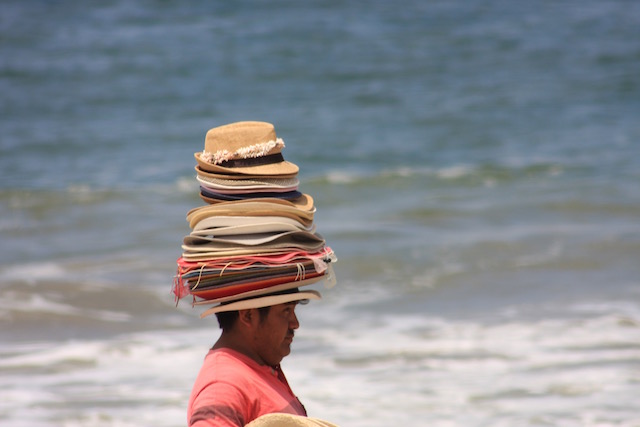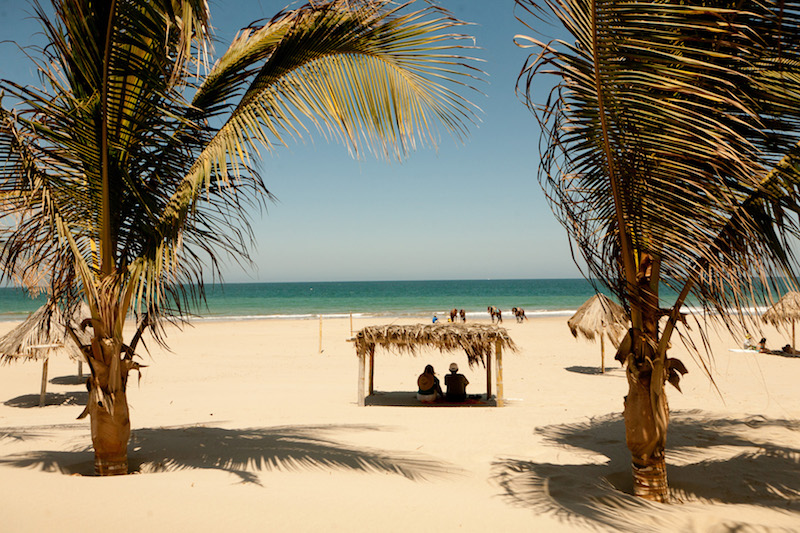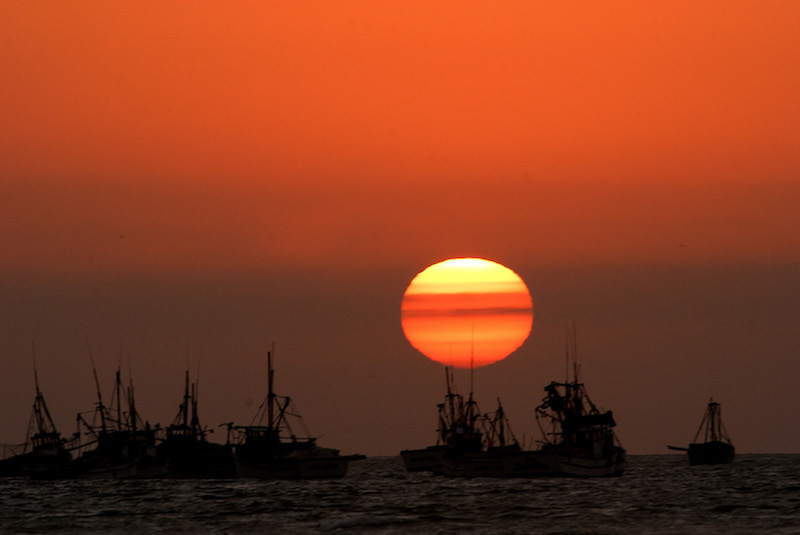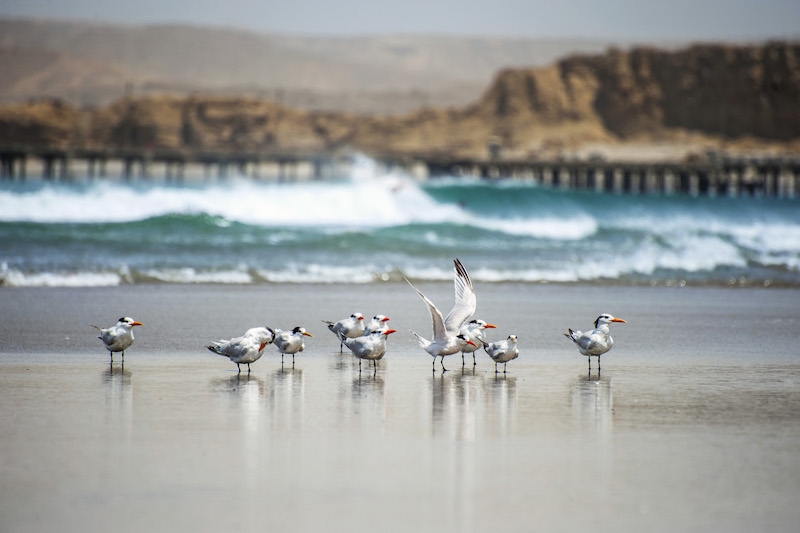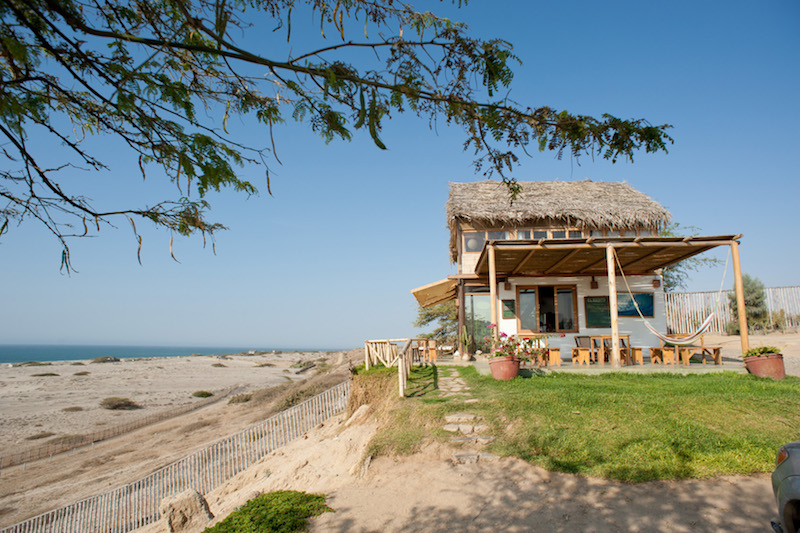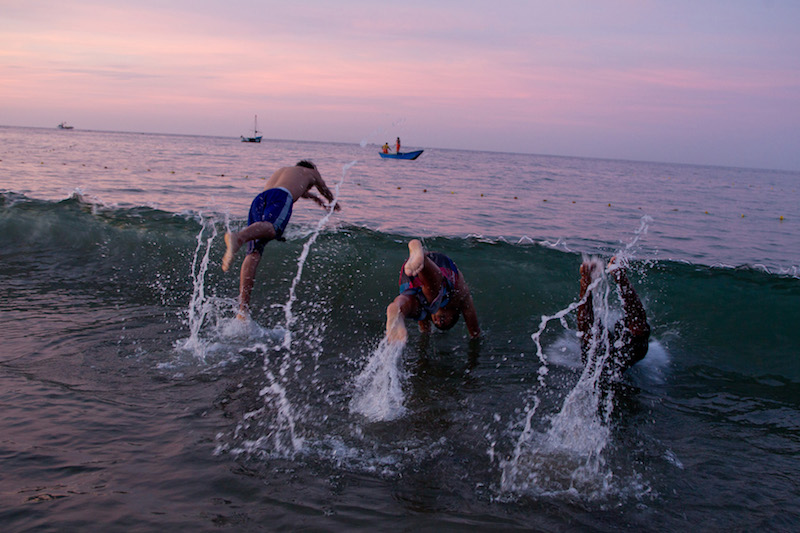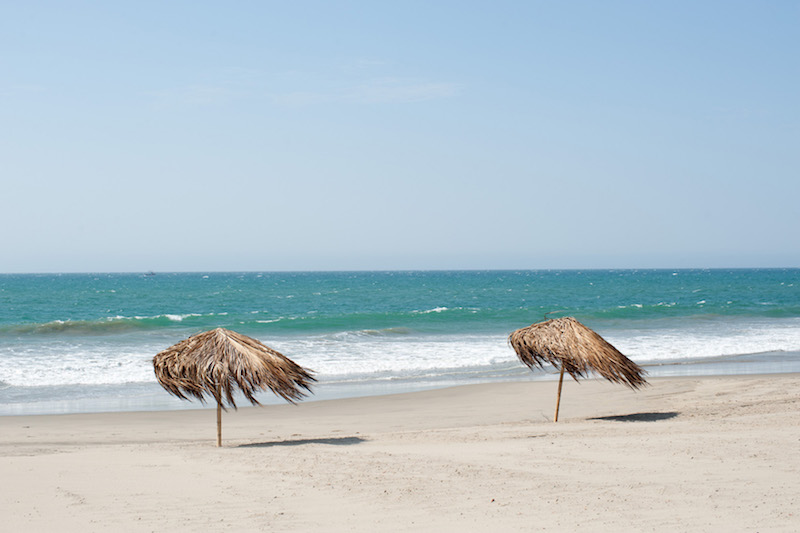Climate of Coastal Piura & Tumbes:
Offshore, this is the meeting-place of two large water currents: the cold Humboldt (coming from the South) and the warm Equatorial (from the North) which, onshore, creates an excellent semi-tropical and dry climate.
There are more than 300 sunny days on average per year, with temperatures ranging from 21º to 34º C (70 - 90º F) at around 60% humidity.
This enviable climate remains mostly constant throughout the year, with only a slight increase in winds from June to October, and soft rain occasionally experienced in summer (December to April), making the region a truly year-round destination.
The Road North:
The city of Piura, with its well-served airport, is often the jumping-off point for these wonderful northern beaches.
From here, the PanAmerican Highway passes through Sullana, a busy market town 38 km (23 miles) north of Piura, before heading northwest to the oil port of Talara and continuing along the coast. Talara, 5 km (3 miles) off the PanAmerican, also has a domestic airport, but little else of interest.
However, an 11 km (7 miles) paved road to the southwest will take you to Negritos. This village - with a lighthouse, sea lion colony, and beaches for swimming and surfing - sits on Punta Pariñas, the westernmost point in continental South America (locally called Punta Balcones).
Continuing north will bring you to Cabo Blanco, 32 km (20 miles) along the coast by unpaved road or a few miles longer via the PanAmerican Highway. An important oil field lies beneath the area, and oil pumps and offshore oil rigs blemish the landscape.
Peru’s most famous deep-sea sport fishing port, Cabo Blanco drew the likes of novelist Ernest Hemingway and US Vice President Nelson Rockefeller in the 1950s.
In 1953, American oilman Alfred Glassell, Jr. set the world record here for largest marlin caught—a 709 kg (1,560 lb) specimen.
The fishing has declined since then, and the area is now more popular with expert surfers. The perfect 3 m (10-foot) tubular wave crashes onto a reef, however, so beginners should not attempt it.
Travel another 15 km (9.5 miles) to the north and you will arrive at Los Organos, a small, relaxed beach town with easy surfing year-round. The town is somewhat run-down, but there has been a flurry of building of small hotels and holiday homes along the beachfront to the south of the main pier.
Sea turtle at Ñuro, near Los Organos.
A 15-minute drive south of Organos is the tiny village of Ñuro, which is notable for the sea turtles that can be seen off the pier, mingling with the fishing boats. It is possible to jump into the sea with these turtles: if you have a snorkel, wear it.
To get away from urban life, there is a cluster of beachfront hotels 5 km (3 miles) north of Organos, at Vichayito.
Aside from the hotels, there are only a couple of small shops and a homely restaurant, in the way of infrastructure; but the atmosphere is one of pure relaxation and it is a wonderfully tranquil spot from which to enjoy the Pacific Ocean.
Mancora:
For more in the way of accommodation, eateries and nightlife, one needs to go to the former fishing village of Mancora, Peru’s most celebrated beach area, 8 km (5 miles) to the north.
Mancora is easy to reach, with the PanAmerican dropping one off in the middle of town, just two or three minutes walk from the ocean.
Water temperatures are consistently warm, the surf is suitable for beginners, the sun stays out year-round, and local fishermen keep the restaurants supplied with the catch of the day.
Accommodations range from backpackers’ hangouts to deluxe bungalows loosely spread out over several kilometres of beach front.
Mancora has developed rapidly in recent years, becoming increasingly popular with the expanding Peruvian middle class, and so accommodation should be booked well ahead for New Years and Fiestas Patrias (when prices can increase), and summer weekends.
The surfing is acceptable all year, but best from November to March. Boards and lessons are available; daring visitors may want to try kite-surfing.
Things to do from Mancora:
There is more to Mancora than bumming around the beach. You can soak in hot springs and do your own body and facial treatment at the natural mud baths 12 km (7.5 miles) east of town, up the wooded Fernandez River Valley.
For those prepared to go a bit further afield, there is a crocodile sanctuary in Puerto Pizarro, 14 km (9 miles) northeast of Tumbes, where you can see the only Peruvian population of the American crocodile (Crocodylus acutus) which is threatened by local shrimp farms.
Bird-watchers can visit the mangroves and Isla de los Pajaros (Bird Island), with its large breeding colonies of seabirds that return spectacularly at dusk.
For inland birding, Cerros de Amotape National Park covers multiple eco-systems as the coastal desert gives way to the Andes Mountains. These, along with the River Tumbes which flows through the park, attract a multitude of bird species.
Tumbes:
There is also an airport in the small city of Tumbes, which is the eponymous capital of Peru’s northernmost coastal department.
Located 30 km (19 miles) from the Ecuadorean border, it provides easier access to more northernly beach resorts, such as Punta Sal and Zorritos, than Piura, but has fewer daily flights, and they tend to be a little more expensive.
Tumbes' relatively modern Plaza de Armas is surrounded by simple bars and restaurants with shaded outside patios for a cool drink in the hot weather.
The most interesting streets are Grau, east of the Plaza, with quaintly dilapidated 19th-Century buildings, and the modern, pedestrian thoroughfares of San Martin and Bolivar, north of the plaza.
The Malecon, a block from the Plaza, overlooks the Tumbes River, which runs through the town.
How to Visit the Northern Beaches:
A few days at a northern Peru beach is an ideal way to begin or end your Peru holiday. So PeruNorth can arrange a Pacific Beach Extension, with pick-up and drop-off at a local airport and the number of hotel nights that you desire.

